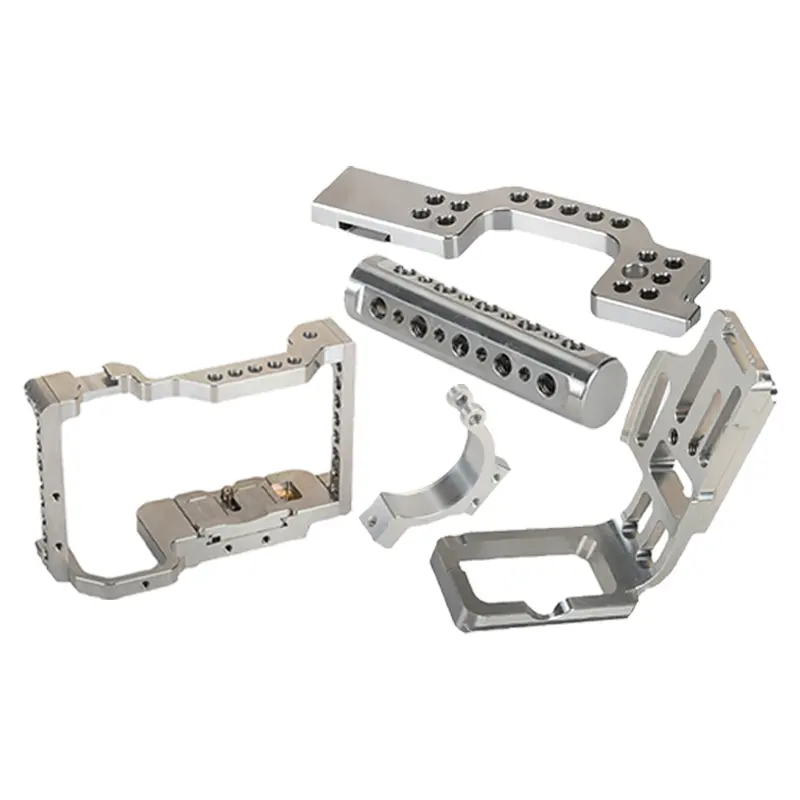

Time:2025-06-23 Views:1

The hardware structure of a CNC system consists of interconnected components that enable precise control, data processing, and physical machine operation. These components work in tandem to convert digital instructions into mechanical movements while ensuring reliability and performance.
1.CNC Controller (CPU Unit)
The controller is the "brain" of the system, typically a microprocessor-based unit that executes program code, performs real-time calculations, and manages communication between components. It includes a memory module for storing CNC programs, system parameters, and tool offsets. High-end controllers may use multi-core processors or digital signal processors (DSPs) to handle complex 3D tool paths and advanced control algorithms, such as look-ahead processing to anticipate tool movements and optimize feed rates.
2.Input/Output (I/O) Modules
I/O modules facilitate communication between the controller and external devices. They receive signals from operator panels (e.g., start/stop buttons, jog switches), sensors (e.g., limit switches, tool breakage detectors), and actuators (e.g., solenoids for coolant valves). For example, when an operator presses an emergency stop button, the I/O module sends a signal to the controller, which halts all machine movements immediately.
3.Servo Drives and Motors
Servo drives convert low-power control signals from the controller into high-power electrical signals to drive servo motors. These motors are responsible for moving the machine’s axes (e.g., X, Y, Z) or spindles. Closed-loop systems use feedback devices (encoders or resolvers) attached to the motors or linear axes to provide real-time position data to the controller, enabling precise correction of any deviations from the programmed path. Open-loop systems, less common in high-precision applications, lack feedback and rely solely on motor commands.
4.Machine Interface Unit (MIU)
The MIU is the physical interface between the operator and the CNC system, typically including a CRT or LCD display, keyboard, and MDI (Manual Data Input) panel. It allows operators to input programs, monitor machine status (e.g., spindle speed, tool position), and adjust parameters manually. Modern systems often feature touchscreen interfaces with graphical displays for intuitive programming and diagnostics.
5.Power Supply Unit (PSU)
The PSU provides stable electrical power to all components, ensuring voltage regulation and protection against surges or interruptions. It may include uninterruptible power supply (UPS) modules to safeguard against sudden power loss, preventing damage to the machine or corruption of program data.
6.Machine Tool Components
These include the mechanical structure of the machine (e.g., bed, columns, slides), linear guides, ball screws, and spindles. High-quality components like pre-loaded ball screws and linear roller guides minimize backlash and friction, ensuring smooth and accurate movements. Spindles, often driven by AC induction or permanent magnet motors, provide the rotational force for cutting tools, with speeds ranging from a few hundred to over 100,000 RPM in high-speed machining applications.
7.Auxiliary Systems
These include coolant systems, chip conveyors, tool changers, and safety enclosures. For example, automatic tool changers (ATCs) store multiple tools in a magazine and swap them out based on program commands, while coolant systems deliver cutting fluid to cool the tool and workpiece, improving surface finish and tool life.
Read recommendations:
1'' Ball Adapter with 1/4"-20 Threaded Post Compatible with RAM Mounts B Size Double Socket Arm
Camera Cage for Canon 5D Mark III/5D Mark IV Video Shooting Stabilizer Kit Camera Bracket Kit
Impact - Induced Displacement Resistance of Quick - Release Plates